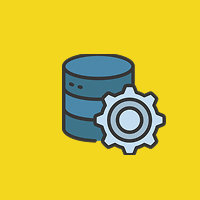React is an incredibly popular JavaScript library for building dynamic and interactive user interfaces. However, as your application grows in complexity, performance can often become a challenge. Slow load times, unnecessary re-renders, and laggy user interactions can all negatively affect the user experience. Fortunately, React provides several techniques and best practices to help optimize performance. In this blog, we’ll explore some of the most effective strategies for enhancing the performance of your React applications.
1. Use React.memo to Avoid Unnecessary Re-renders
React.memo is a higher-order component that helps prevent unnecessary re-renders in functional components by memoizing the component’s output. React will only re-render the component if the props have changed, making this an ideal solution for performance-heavy components or components with expensive calculations.
Best Practice: Use React.memo for functional components that produce the same output for the same set of props. This ensures that React doesn’t re-render the component unless the props actually change.
2. Optimize State Updates with useState and useReducer
State updates are a core part of React applications, but improper state management can cause performance issues due to unnecessary re-renders. For local state, the useState hook is a great option, while for more complex state logic, useReducer is a better choice.
Best Practice: Avoid frequent state updates, and when updating state based on previous values, use functional updates. This minimizes unnecessary re-renders and optimizes performance.
3. Implement Code Splitting
It will be possible for you to divide your application into more manageable bits so that each chunk loads when needed only. Loading of code upon demand reduces initial loading times so that it is actually fast and interactive. It can be out-of-the box supported using React lazy and Suspense.
Best Practice: To avoid the use of many dependencies in your initial bundle, use dynamic imports through React.lazy and Suspense, importing any given React library and component.
4. Be Smart with useEffect
The useEffect hook is excellent for handling side effects such as fetching data or updating the DOM. But misuse can lead to unnecessary re-renders. Always make sure you specify the proper dependencies in that dependency array to prevent your effects from running unnecessarily.
Best Practice: Take care of dependencies in theuseEffect hook. The dependency array should be as minimal and as specific as possible to prevent unnecessary executions of the effect.
5. Avoid Inline Functions in JSX
Inline functions created directly within JSX can cause unnecessary re-renders, as they generate new function instances with every render. This can cause performance bottlenecks, especially when dealing with large applications or complex components.
Best Practice: Define functions outside of the JSX, ensuring that the same function instance is used across renders, which helps reduce re-renders and improves overall performance.
6. Implement Virtualization for Long Lists
Rendering large lists of items all at once can cause performance degradation, especially for large datasets. Virtualization renders only the items visible in a list, and it improves rendering speed as well as reduces memory usage. Libraries such as react-window and react-virtualized may be used to implement this technique.
Best Practice: Long lists or large data sets should use virtualization libraries such as react-window or react-virtualized for smoother scrolling and faster rendering.
7. Profile and Monitor Performance
Monitoring your application’s behavior is crucial to find performance bottlenecks. There are incredible tools in the React environment for profiling your components; these are React Developer Tools, and the React Profiler. These tools help you understand, which components are re-rendering too frequently or takes too long to render, respectively.
Best Practice: Regularly use React DevTools and Chrome DevTools to profile your app, track re-renders, and monitor JavaScript execution to identify and address performance issues.
8. Optimize React Context API Usage
The React Context API is useful to pass global data within the component tree. However over-reliance on contexts causes unnecessary re-renders when a consumer of a context would re-render whenever changes occurred in the value.
Best Practice: Use the Context API sparingly for global state that’s needed across many components. For more frequent state updates, consider using local state or other state management tools like Redux.
Conclusion
Optimizing React performance is essential for providing a smooth and responsive user experience, especially as your app grows in complexity. By applying the strategies outlined in this blog—like using React.memo, implementing code splitting, and carefully managing state and effects—you can ensure your application remains fast and responsive. Regular profiling and smart use of the Context API and hooks will also help you keep performance issues at bay, allowing you to build React apps that scale efficiently.
Contact Us Today













 Database Development
Database Development












































